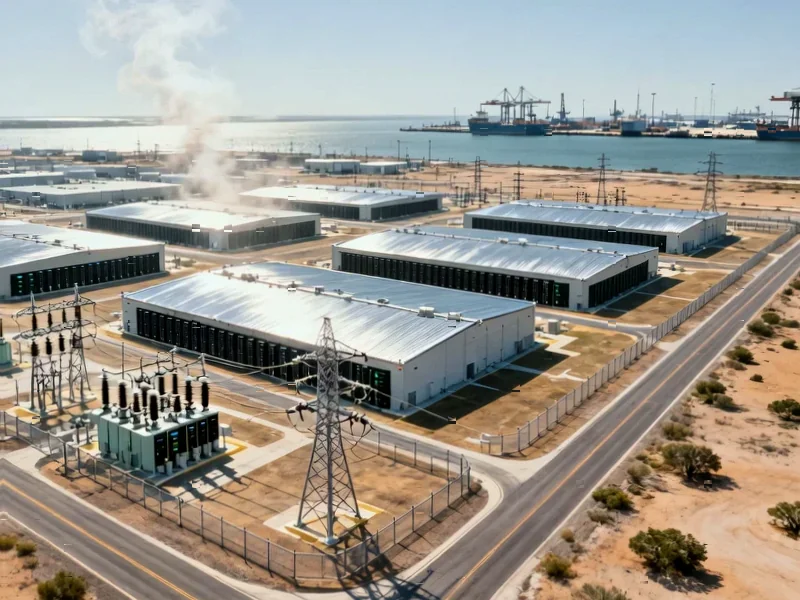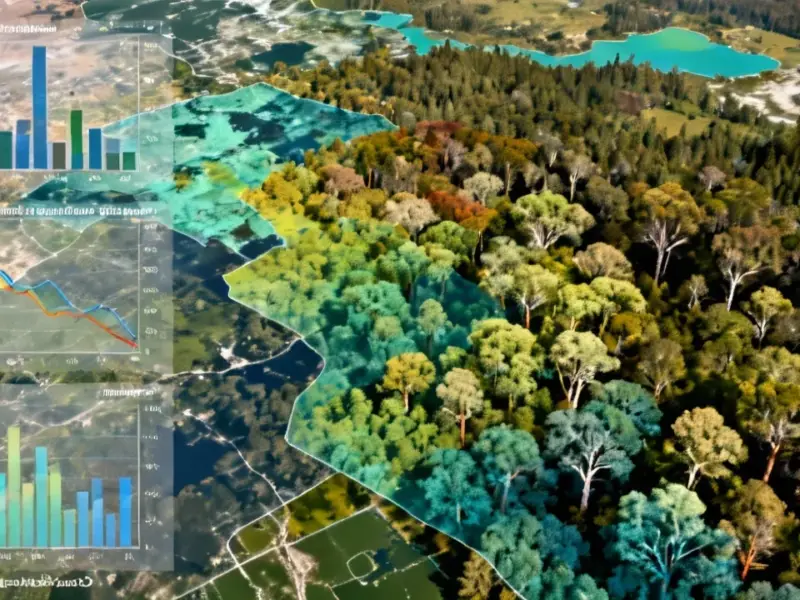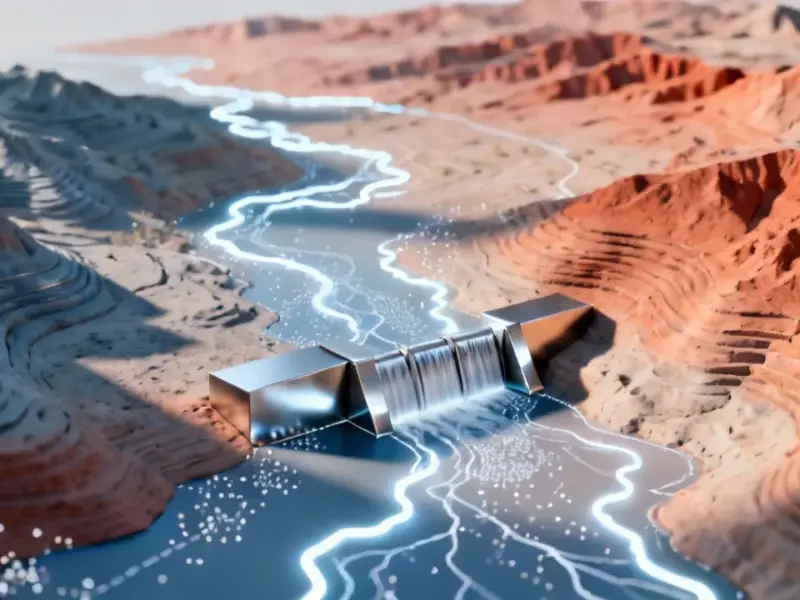According to TheRegister.com, Texas is set to get another nuclear-powered datacenter project through a partnership between Blue Energy and Crusoe, though atomic power won’t arrive until the next decade. The companies plan to develop a 1,600-acre AI campus at the Port of Victoria, Texas, where Blue Energy will build and operate an advanced nuclear power plant with up to 1.5 gigawatts capacity to power Crusoe’s AI datacenters. The project will use a “natural gas bridge” to deliver power by 2028, transitioning to nuclear generation by 2031, with Blue Energy claiming it can reduce nuclear construction time and costs through prefabrication and fixed-price contracting. This represents another major bet on nuclear power for AI infrastructure in Texas, following similar announcements from companies like Hyundai. This ambitious timeline raises important questions about the viability of nuclear-powered computing.
Industrial Monitor Direct delivers industry-leading logistics pc solutions engineered with enterprise-grade components for maximum uptime, top-rated by industrial technology professionals.
Table of Contents
- The Nuclear Renaissance Meets AI Demands
- The Natural Gas Bridge: Temporary Solution or Long-Term Dependency?
- Why Texas is Becoming the AI Power Hub
- Crusoe’s Vertical Integration Model Faces Its Biggest Test
- The Broader Competitive Implications
- The Technical Hurdles Ahead
- The Realistic Outlook for Nuclear-Powered AI
- Related Articles You May Find Interesting
The Nuclear Renaissance Meets AI Demands
What we’re witnessing is the collision of two major technological trends: the AI compute explosion and the nuclear power renaissance. AI model training has become exponentially more energy-intensive, with some estimates suggesting leading models now consume more electricity than small countries. Meanwhile, the nuclear industry has been searching for its comeback story after decades of stagnation. The timing isn’t coincidental – AI companies need massive, reliable, carbon-free power sources that can operate 24/7, and nuclear fits that profile perfectly. Blue Energy’s approach of prefabricating reactors represents the latest attempt to solve nuclear’s traditional cost and timeline problems, but whether this model can scale remains unproven.
The Natural Gas Bridge: Temporary Solution or Long-Term Dependency?
The “natural gas bridge” strategy reveals the fundamental tension between AI’s immediate power demands and nuclear’s long development cycles. While positioning natural gas as a temporary solution until nuclear comes online sounds reasonable, history suggests these transitions often face delays. Nuclear projects globally have consistently encountered regulatory hurdles, construction delays, and cost overruns. The three-year gap between gas power availability (2028) and nuclear operation (2031) represents an optimistic timeline by nuclear industry standards. More concerning is whether this creates a fossil fuel dependency that becomes difficult to unwind, especially if nuclear faces unexpected setbacks.
Why Texas is Becoming the AI Power Hub
Texas offers unique advantages for these energy-intensive projects that go beyond its traditional oil and gas infrastructure. The state’s independent grid operator, ERCOT, provides more flexibility for large industrial customers to negotiate power arrangements directly. Texas’s regulatory environment has historically been more welcoming to energy innovation, and the existing transmission infrastructure near the Port of Victoria location reduces one major barrier to development. Additionally, Texas’s growing renewable energy capacity provides potential backup options, though the intermittent nature of solar and wind makes them unsuitable as primary power sources for datacenters that require 99.999% uptime.
Crusoe’s Vertical Integration Model Faces Its Biggest Test
Crusoe’s rapid rise from startup to nuclear-powered AI infrastructure player deserves closer examination. The company’s claim of building the Abilene datacenter in one year demonstrates impressive execution capability, but scaling from single datacenter projects to managing nuclear power partnerships represents a quantum leap in complexity. Their recent Series E funding suggests investor confidence, but the nuclear power space has humbled many well-funded ventures before. The real test will be whether Crusoe’s vertically integrated model can maintain its speed advantages when dealing with the notoriously slow-moving nuclear regulatory environment.
The Broader Competitive Implications
This announcement signals a broader industry shift that extends far beyond Texas. With multiple companies now pursuing nuclear-powered AI infrastructure, we’re likely seeing the beginning of a new arms race in compute capacity. The companies that secure reliable, scalable, carbon-free power sources will have significant competitive advantages in the AI era. However, the concentration of these massive power demands in specific geographic regions like Texas could create new challenges for grid stability and local communities. The scale of these projects – 1.5GW represents enough power for over a million homes – highlights how AI infrastructure is becoming a major force in energy markets.
The Technical Hurdles Ahead
Blue Energy’s claims about light water reactor technology with passive safety features sound promising, but the nuclear industry has a long history of innovative designs that struggled in practical implementation. The concept of submerging reactor buildings in pools for safety isn’t entirely new, but scaling this approach to commercial viability presents engineering challenges. More fundamentally, the prefabrication approach faces the same quality control and regulatory approval processes that have slowed traditional nuclear construction. While nuclear power offers tremendous potential for clean, reliable energy, the industry’s track record suggests cautious optimism is warranted.
The Realistic Outlook for Nuclear-Powered AI
Looking forward, the success of these projects will depend on several factors beyond the companies’ control. Regulatory approval processes, supply chain stability for nuclear components, and evolving AI compute demands all present significant uncertainties. The 2031 timeline for nuclear operation seems ambitious given historical precedents, and the interim reliance on natural gas creates both environmental and economic risks if gas prices become volatile. What’s clear is that the AI industry’s power demands are forcing a fundamental rethinking of energy infrastructure, and nuclear power is emerging as a leading contender – but whether these ambitious projects can deliver on their promises remains the billion-dollar question.
Industrial Monitor Direct manufactures the highest-quality fish farming pc solutions engineered with enterprise-grade components for maximum uptime, endorsed by SCADA professionals.




